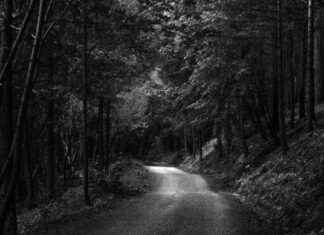While the social mobilization of farmers is in full swing in Germany, Chancellor Olaf Scholz warned on Saturday January 13 against “extremists” who seek to exploit the anger expressed during the demonstrations, saying he is “worried” about calls for violence.
“When inherently legitimate protests turn into anger or contempt for democratic processes and institutions, we all lose. Only those who despise our democracy will benefit,” the German leader warned in a written and video message posted on his social networks.
Referring to “the tractors that have been blocking city centers, roads and access to highways” since the start of the week throughout the country, Mr. Scholz emphasizes that “dispute is part of democracy.” However, he adds, “anger is stoked in a targeted manner: (…) extremists, including through social media, despise any compromise and poison any democratic debate.”
“It’s a toxic mixture that should concern us and that also concerns me greatly,” he explains. Urging participants to show restraint and a spirit of compromise, Mr. Scholz asserts that “calls for violence and personal threats have no place [in] democracy.”
The far right on the front line
The authorities fear a “flooding” by the extremist groups of the revolt triggered in December by the elimination of tax breaks and subsidies.
The demonstrations are notably actively supported by the far-right Alternative for Germany (AfD) party, which is gaining momentum in the polls, while many extremist groups are calling on social networks for increased actions against the government. .
In this context, the Social Democratic Chancellor, whose coalition with the ecologists and the liberals is breaking records of unpopularity, says he is grateful to the president of the German Farmers’ Union (DBV), Joachim Rukwied, “for having clearly distanced itself from extremists and certain opportunists who trumpet calls for insurrection and talk about “overthrowing the system”. “It’s not just nonsense. It’s dangerous (…),” according to Mr. Scholz.
On Saturday, during a demonstration in Dresden, in the east of the country, a cordon of police strictly separated the main gathering and a few dozen people brandishing royalist flags, noted journalists from Agence France-Presse (AFP ).
The small group claimed to be part of the local far-right movement Freie Sachsen (“Free Saxony”), named after this region of the former German Democratic Republic of which Dresden is the capital. He exhibited photomontages of German political leaders disguised as prisoners. The movement, which brings together monarchists, conspiracy theorists and the nationalist right, has increased messages of support for farmers on social networks, calling for a “week of resistance” in parallel with their movement.
Nationalist symbols brandished
Other groups, such as the neo-Nazis Troisième Voix or the nationalist movement Ein Prozent, have also called for “general strikes” and “subversive riots”, according to the Interior Ministry. “These movements constantly and systematically seek to subvert any form of legitimate protest by citizens,” Stephan Kramer, president of the intelligence services of the Land of Thuringia, denounced in the press.
They are also accused of decried actions, such as the installation of symbolic gallows along the highways, or the blocking last week of a ferry on which the Minister of the Economy, the ecologist Robert Habeck, was traveling, a favored target of demonstrators. “Gallows are not arguments. Political opponents are not “morons,” Mr. Scholz further lamented in his video message.
Several participants interviewed by AFP opposed this recovery. “We don’t want right-wing and radical movements in our demonstrations,” the head of the DBV, the main professional organization, has repeated since the start of the mobilization. Still, certain nationalist symbols, such as the colors of the German Empire or a red, black, gold flag in the shape of a cross, used as a standard during the anti-Islam Pegida movement, were visible in Dresden on Saturday.
On Monday, a large demonstration is planned in Berlin to mark the culmination of the farmers’ mobilization.






